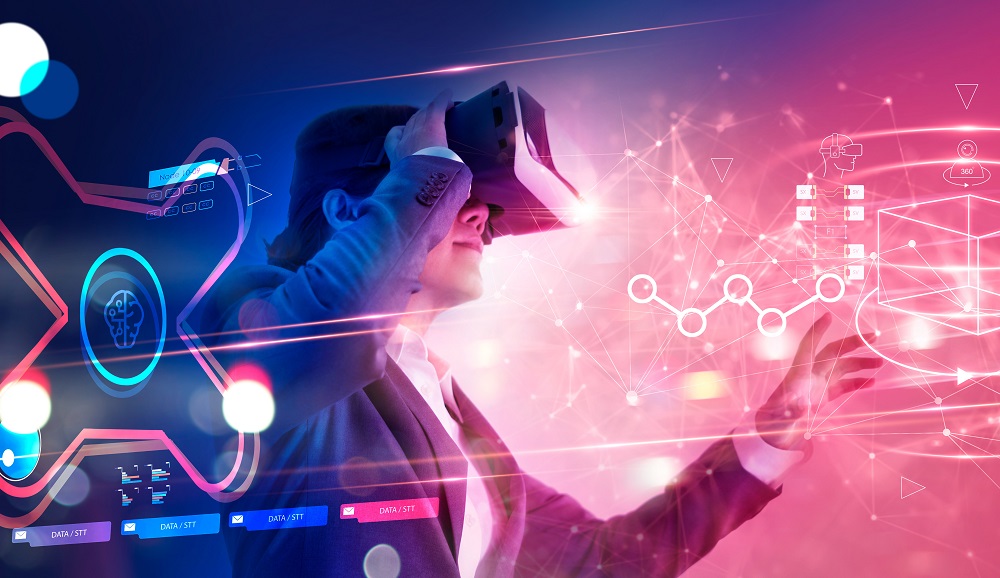Transition from Reality to eXtended Reality? – The Next Wave of Digitalization Opens Immense Opportunities for Finnish Companies
More realistically, XR will creep into our daily lives over several years, first as Snapchat filters or apps such as Google Lens, later via more sophisticated smart glasses, perhaps by Apple, Meta, or Snap Inc. Many of the first use cases are likely to be in business and productivity, e.g., retail, training, and maintenance.
Perhaps in the 2030s XR users can actually forget that they are using XR and experience being at a concert or chatting with a distant relative.
Part of the economy of trading physical goods such as fashion items will move to digital world, which opens a new sales and marketing channel for both physical and digital goods. XR will profoundly change our daily lives, commerce, and work. Eventually digital reality will become indistinguishable from our reality, in what is called a Metaverse.
Just as 2D digitalization, which was accelerated by the Internet and smart phones in the previous decades, also 3D digitalization with XR will yield enormous business opportunities. All the leading technology companies including Apple, Microsoft, Meta, Google, Samsung, HTC, and Sony are in the race. In 2022 these companies founded a Metaverse Standards Forum having in total 650 member organizations to create XR industry standards and to solve interoperability issues. To better understand the variety of the business opportunities that will emerge in the coming years and decades, we will have to look deeper into the XR and Metaverse concepts, technologies, and business areas.
Immersive Technologies, VR, AR, XR, Metaverse… I'm confused!
EXtended Reality (XR) is the umbrella term referring to all the immersive technologies on the spectrum between real and virtual worlds: e.g., AR, MR, AV, VR, 360 video. All of these combine several deep technologies that will have to be miniaturized to fit into a lightweight smart glass. Meta's CEO Mark Zuckerberg was probably right in considering XR as one of the hardest technical challenges of the 2020s. Additionally, to deliver the seamless digital experience for the user, there will have to be a versatile ecosystem of businesses and validated business models ranging from hardware to complex 3D content such as advanced Social VR Platforms or Massive Multiplayer Online games.
Lightweight XR glasses are expected to eventually replace mobile phones as an intuitive and universal user interface, just as mobile phones previously replaced PCs in many use cases.
Among others, this view was recently voiced by Nokia's CEO Pekka Lundmark at the World Economic Forum (WEF).
The latest buzzword 'Metaverse' was originally coined by the author Neal Stephenson in 1992 in his science-fiction novel 'Snow Crash'. However, it didn’t become a buzz word until Mark Zuckerberg laid out Meta's (FB's) vision of the Metaverse in 2021. Metaverse is often considered as a full digital twin of reality, digital overlay on physical reality and also as the next iteration of the Internet. However, in 2022 Metaverse is still in the distant future as we lack many of the technologies and content with interconnected spaces, lightweight smart glasses, and payment systems, to name a few.

Enormous Business Potential
In early 2022 Business Finland and Frost & Sullivan released a report 'Growth Opportunities in Extended Reality', which is available for our Finnish customers. Our aim was particularly to identify global business opportunities and trends in XR and also to analyze the Metaverse and its impact.
F&S identified four main categories of business opportunities in which Finland should have a clear edge. The opportunities are mostly technical since Finnish universities and research agencies have been doing decades of technical research in all the key technologies needed in XR and there is a significant concentration of deep tech companies. Additionally, the former Nokia cluster and the gaming cluster have had spill over effect into XR.
Firstly, Finnish companies should strengthen the XR ecosystem by partnering with industry leading technology companies that are providing technologies convergent with XR. The leading tech companies need to accelerate R&D to meet market demand and therefore need SMEs' support. The opportunities for partnering were identified in trending markets and technologies, for example in remote assistance, improved user experience, 5G, and adoption of XR in several industry verticals.
Secondly, as XR enables tracking all the user's actions, movements, eye movements and even pupil size, a lot of attention will be paid by the users and organizations on user privacy. On the other hand, improved user privacy also drives wider XR adoption. This trend will open opportunities in e.g., edge computing, data encryption and standardization work.
Thirdly, certain technical features are currently clearly underserved in XR, and they open market opportunities for significant technological improvements, for example in the fields of displays, edge computing, batteries, 6G and Human Machine Interface (HMI). For example, still a lot of R&D and Design for Manufacturing are needed to commercialize display technologies such as MicroLEDs, Holographic Pancake Lenses, and Optical Waveguides. XR is also closely related to technologies such as AI, IoT and digital twins as those generate data for XR visualization.
Fourthly, there are certain key application areas or industry vertical specific solutions that Finnish companies should pay more attention to, these include smart retail, tourism, architecture, and automotive sector. In addition, several emerging application areas were identified.
What needs to be done?
XR will open enormous business opportunities and it will affect individuals and businesses just as Internet in the 90s or smart phones a decade later.
Finnish companies should partner with companies that have technologies convergent with XR and to focus on privacy, certain underserved deep XR technologies and the most promising vertical specific solutions.
In my own opinion, one way to advance the industry might also be a consortium of companies around Open-Source project such OpenAR, which would act as a glue for the somewhat scattered landscape of Finnish XR companies and research institutes. This might act as a showcase for Finnish knowhow in XR techs, like photonics or machine vision, attract the large leading companies in XR and most importantly to eventually generate major export business in XR.
Finland should not be left behind in XR as happened for example with the smart phone ecosystems. Finland is in excellent position to become a European hub for XR development. What we need is ability to see opportunities, willingness to take risks, industry trailblazer company with the brunt of the business responsibility and ability to sell, market and create strategic partnerships. It's about time to have an industry leader outside of Silicon Valley, why not in Finland?
The report 'Growth Opportunities in Extended Reality' is available on request from Jani Jokitalo.
